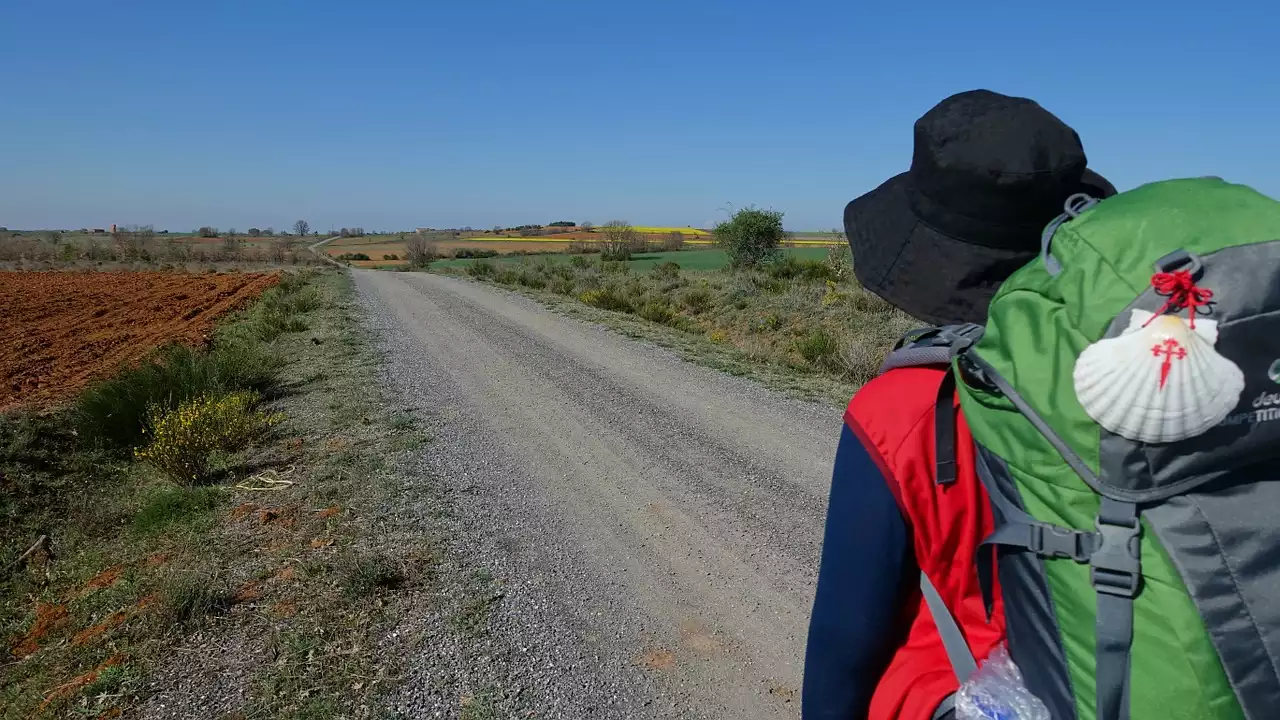The Camino de Santiago is a network of pilgrimage routes that spread across northern Spain and into France. St. James was the first apostle to visit this region, bringing Christianity to these lands in the first century A.D. for the purpose of evangelizing the local populations. The Camino de Santiago has slowly developed as a focal point for Christian pilgrims who wish to follow in St. James’s footsteps. In addition to being an excellent opportunity for spiritual reflection and personal growth, hiking the Camino de Santiago is also an incomparable way to understand different cultures and traditions from an insider’s perspective while getting some much-needed exercise at the same time. It’s impossible to walk on any of these trails without feeling inspired by their beauty and awed by their history. Here are some tips on how you can hike the Camino de Santiago as part of a spiritual pilgrimage yourself.
Research your Camino de Santiago route.
The Camino de Santiago was originally established in France, so it stands to reason that that is where your pilgrimage should begin. Once you’ve decided whether to walk the “French Way” or the “Portuguese Way”, it’s time to do some research on what the Camino de Santiago will actually entail. There are many resources for learning about the specific landscapes, cultures, and traditions that you’ll encounter along the way. If you’re looking for a more holistic approach to your pilgrimage, take note of the legends, symbolism, and cultural significance of certain landmarks. If you’re more interested in the practical aspects of your trek, you can research the average temperatures, available facilities, and best times to walk each route.
Plan your logistical details.
When considering the logistics of your pilgrimage, it’s important to think about your diet, your sleeping arrangements, and the mode of transportation you’ll be using when you travel.
Dietary restrictions: Keep in mind that different regions of Spain and France may have very different culinary traditions. You should be able to find food to suit a wide variety of dietary restrictions along the way.
Sleeping arrangements: Hostels and hotels are plentiful along the Camino de Santiago. Make sure to book ahead of time if you’ll be traveling during a high-traffic period. : Hostels and hotels are plentiful along the Camino de Santiago. Make sure to book ahead of time if you’ll be traveling during a high-traffic period.
Mode of transportation: If you plan to use public transportation to get from one city to the next, check the routes and timetables to make sure you aren’t spending too much time in transit.
Pack for a spiritual hiking pilgrimage on the Camino de Santiago.
When you’re hiking the Camino de Santiago, you’ll be doing so in a very different climate than what you’re probably used to. Make sure to pack for the following weather conditions:
Rain: The rainy season in Spain runs from June to September, so be sure to pack for lots of rain if walking during that time. The rainy season in Spain runs from June to September, so be sure to pack for lots of rain if walking during that time.
Hot temperatures: Temperatures can rise as high as 47 degrees Celsius in some areas, so be sure to pack for very high temperatures. Temperatures can rise as high as 47 degrees Celsius in some areas, so be sure to pack for very high temperatures.
Cold temperatures: Temperatures can drop as low as -9 degrees Celsius in some areas, so be sure to pack for very cold temperatures. Temperatures can drop as low as -9 degrees Celsius in some areas, so be sure to pack for very cold temperatures.
Strong winds: Depending on the time of year, you may experience strong winds that make it feel significantly colder.
The hike itself.
The hike is the reason you’re doing this in the first place. Take some time to reflect on your motivations for undertaking this pilgrimage. Why are you walking the Camino de Santiago? Are you trying to atone for past transgressions? Are you trying to improve your relationship with God? Is this a way for you to draw closer to your loved ones? Keep these things in mind as you walk, and you’ll find your spiritual journey becomes an ever more enriching and powerful experience. Be sure to take time to appreciate the natural beauty of the trail and the people you meet along the way, and you’ll find the Camino de Santiago is an excellent way to grow spiritually.
Conclusion
The Camino de Santiago is a tried and true path to spiritual growth. It stretches across thousands of miles and over many different landscapes, allowing you to view the world from a new and exciting perspective. Whether walking the route as part of a religious pilgrimage or simply as a way to explore new places, the Camino de Santiago is an experience you’ll remember and treasure for a lifetime.


 Getting Beach Body Ready for Beach Volley-Ball
Getting Beach Body Ready for Beach Volley-Ball
 Meryl Streep — 3 wins, 21 nominations at the Oscars
Meryl Streep — 3 wins, 21 nominations at the Oscars
 The Many Uses of the Handy Food Processor
The Many Uses of the Handy Food Processor Hiking The St Magnus Way in Scotland
Hiking The St Magnus Way in Scotland Hiking on The Pennine Way in the United Kingdom
Hiking on The Pennine Way in the United Kingdom 1000 miles of Hiking Abraham's Path in the Middle East
1000 miles of Hiking Abraham's Path in the Middle East